Green architecture – Saffire Freycinet Resort, Australia
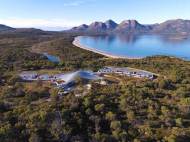 Aside appealing design, Saffire Freycinet resort has various sustainable features. The beautiful Hazards mountain range is framed in the main building’s roof line, and the suites present like waves breaking on the shores below. The original Saffire site was a caravan park and backpacker’s accommodation, and it affected a great deal of degradation and erosion to the surrounding vacation area.
Aside appealing design, Saffire Freycinet resort has various sustainable features. The beautiful Hazards mountain range is framed in the main building’s roof line, and the suites present like waves breaking on the shores below. The original Saffire site was a caravan park and backpacker’s accommodation, and it affected a great deal of degradation and erosion to the surrounding vacation area.
The Saffire site occupies a small portion of what had been cleared and eroded, and a great deal of time has been spent on re-vegetation of the site with 30,000 native plants to encourage a return to its natural form. Designed by award-winning Tasmanian architects Circa Architecture (previously known as Morris Nunn and Associates), Saffire evokes a connection to the sea, through references of waves, sea creatures, sand dunes and a flowing, organic form.
The roof is made from curved Tasmanian wood beams, built in a ribbed structure with ply overlay which forms a smooth underlay for the Polymea membrane. The glass used has a very low percentage of reflectivity, allowing for maximum impact when viewing the surrounding coastal beauty both during the day and at night. Saffire has been built using a framework of environmental sustainability with focus on insulation and natural cycle air flow systems.
Tasmania’s East Coast enjoys more than 300 rain-free days a year. In collaboration with Federal Group, and state and local governments, the folks from te resort have provided a freshwater solution for the entire area. They managed to essentially drought-proof the township, with a total of 350 megalitres in their catchment area where Saffire uses about 5 megalitres.
In order to preserve the purity of the environment at night, the lighting design of the resort has minimal impact on the landscape after dark. The designers have placed great emphasis on maintaining the hillside as dark as possible so that the development has limited impact on night views within the locality.
Interior lighting was carefully considered from an exterior perspective, and is strictly managed to limit stray light. Exterior and landscape illumination is kept at low level, and treated in a stepping stone methodology to protect natural ambient qualities and avoid distracting spill light.
Low wattage lamps, with wide application of LED technology, applied with precision and all networked through a comprehensive lighting control system are used in order to conserve energy. Presence detectors are employed to limit waste energy. In the guest suites control is designed to be intuitive and create flexible, exciting moods; elsewhere pre-set lighting scenes are automated to ensure that the resort always harmonizes with ambient conditions.
In order to help support the local community and economy, they have sourced the finest in Tasmanian produce in their restaurant and bar area. Highest standards of recycling are used throughout the property. In addition, there is an on-site vegetable garden where they grow their own produce, and use the appropriate kitchen waste to compost the garden.

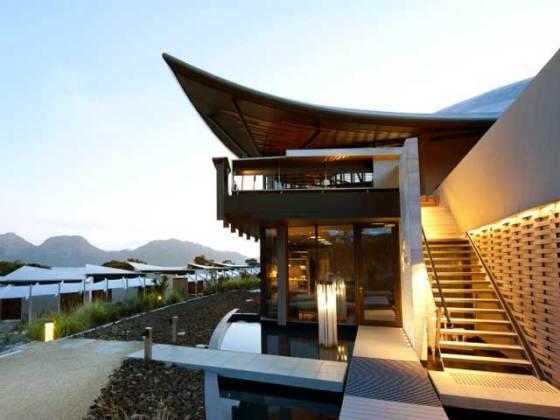
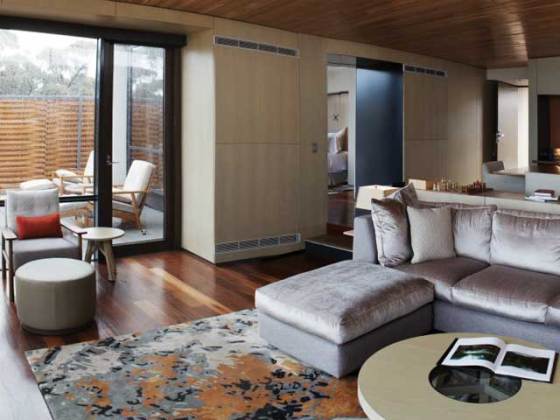
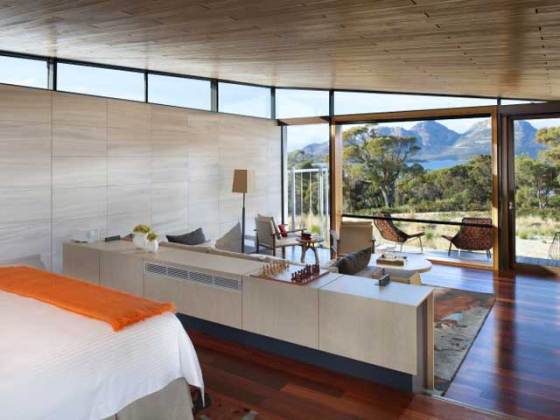
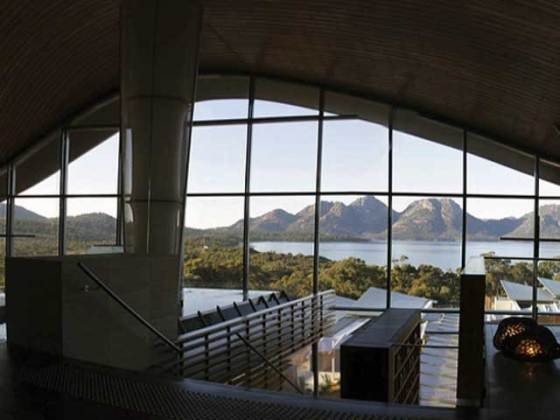








Leave your response!